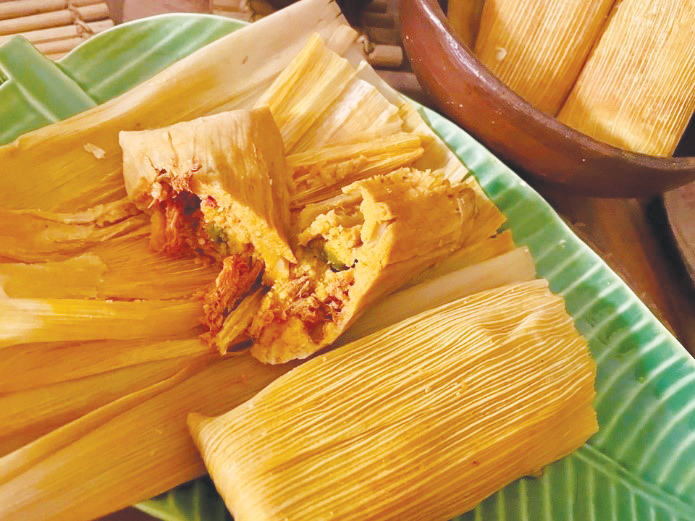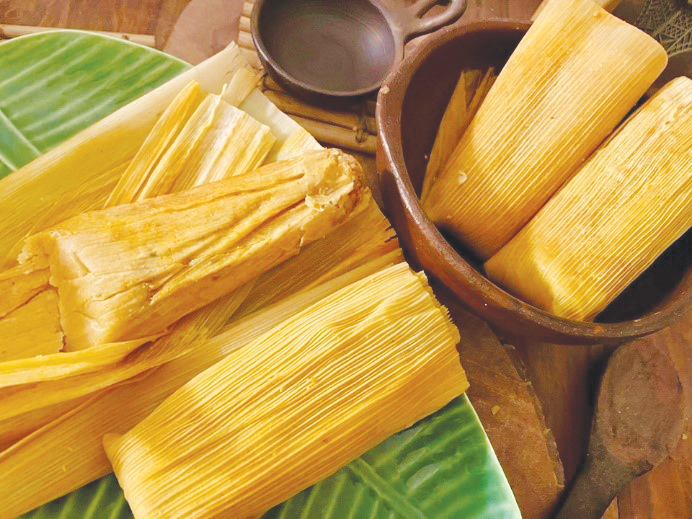Terrific, timeless tamales
A culinary treat redolent of both the comfort of home and its ancient ethnographic past from the other side of the globe
At A Glance
- It is perfectly conceivable that Philippine national hero Jose Rizal and his fellow Filipino <i>ilustrados</i> had partaken of Spanish tamales while living in Madrid in the 1880s.
By Joel Cuello, Ph.D.

Tamales, whence comest thou?
I drove on purpose the other day to a Mexican tienda de conveniencia in the southern part of Tucson here in southern Arizona to purchase a few pieces of Mexican tamales since I had not partaken of them in a while, and I enjoy them.
Mexican tamales are a traditional Mexican dish made of corn dough filled with permutations of meat, chilis, potato, herbs, etc., wrapped in corn husks and then steamed.
Instantly conjuring both in taste and appearance the warm feelings of home and time-tested tradition, tamales easily qualify as home-style comfort food. They are, indeed, strongly associated in Mexico with themes of celebration, family, kinship, and community.
Tamales originated in Mesoamerica—specifically in present-day Mexico and Guatemala—and have approximately 7,000 years of history as a culinary creation of the Aztecs.
Tamales were served by the Aztecs to Spanish conquistador Hernan Cortes, who then led the conquest of the Aztec Empire in Mexico from 1519 to 1521. The delicacy was subsequently brought home and appropriated by Spain, which called it tamal.
(It is perfectly conceivable that Philippine national hero Jose Rizal and his fellow Filipino ilustrados had partaken of Spanish tamales while living in Madrid in the 1880s.)
Meanwhile, tamales were brought to the Philippines through the Manila-Acapulco Galleon trade, which crisscrossed the Pacific Ocean for 250 years between 1565 and 1815.

Today tamales are found all around the globe.
In the Philippines, tamales have been adapted to the ways of life and regional palates of Filipinos, engendering distinctive culinary variations from Ilocos Norte to Pampanga to Cavite to Batangas to Samar to Cebu to Bukidnon to Zamboanga and other places.
Assuming such local names as bobotu, binaki, pintos, etc., Philippine tamales at times have ground corn replaced with ground rice, and corn husks with banana leaves, and then filled with a whole gamut of ingredients from meats to crushed peanuts to hard-boiled egg to cheese to jackfruit and more.
Owing to their convenient portability, the ancient Aztecs used tamales as food provisions for hunting trips, long-distance travels, and for feeding their armies.
In contemporary Philippines, however—given the onerous work involved in their preparation—tamales are now typically reserved only for special holidays and celebrations.
Incidentally, my hometown of Tucson, Arizona, arguably the cradle of the American Southwest tamales, owns the distinction of being the first of only two, thus far, UNESCO Creative Cities of Gastronomy in the US. Tucson’s designation in 2015 was on account of its having had the longest uninterrupted agricultural history in the US, dating back over 4,000 years, and its concomitantly rich and diverse foodways.
In 2017, San Antonio, Texas followed suit, becoming only the second American city to receive the prestigious UNESCO designation.
Among Philippine cities, Iloilo City was bestowed the UNESCO honor in October 2023, the first and only city in the country so far with the acclaimed recognition.
Thus, the tasty tamales have proved to be an enduring cross-cultural emblem and signpost of globalization, providing historical traces for mapping out the global collisions and linkages between peoples and cultures across millennia.
Alas, the homey tamales have long turned cosmopolitan.
AUTHOR’S NOTE The author is a professor of Biosystems Engineering at The University of Arizona in Tucson, Arizona. A corresponding member of the National Academy of Science and Technology of the Philippines (NAST PHL) and past president of the Philippine American Academy of Science and Engineering (PAASE), Prof, Cuello lives in Tucson, Arizona. [email protected].